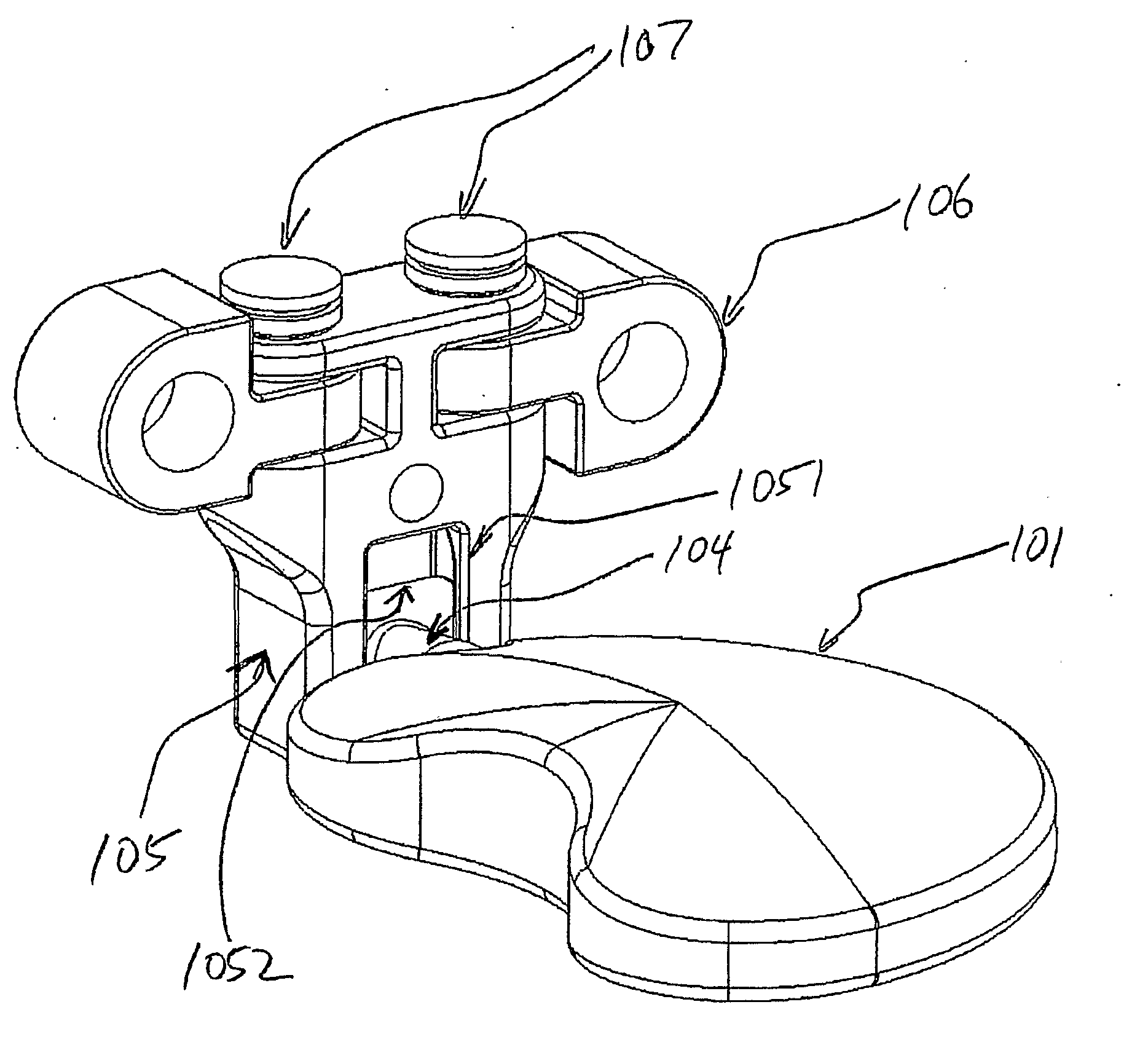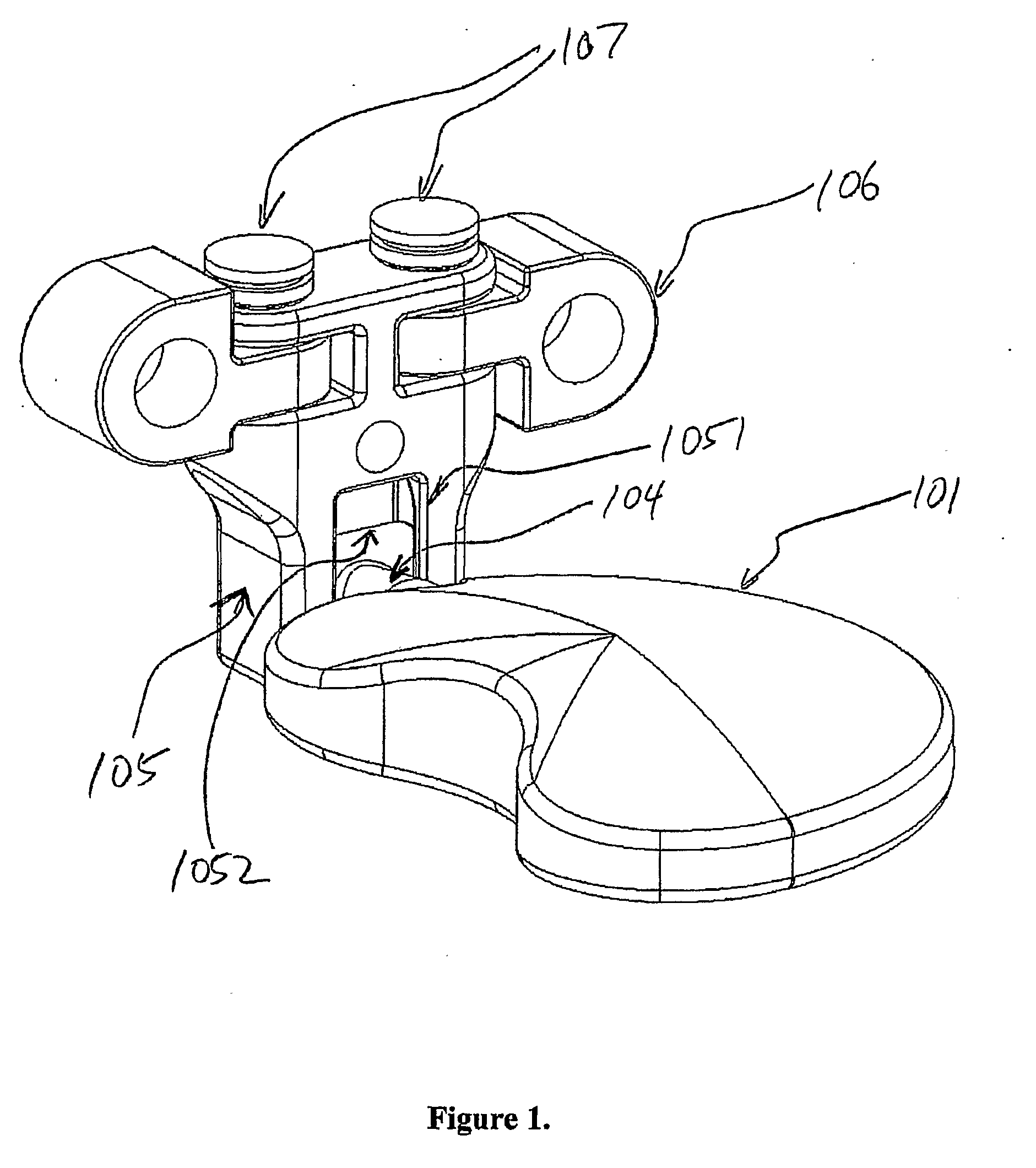Hinged Artificial Spinal Disk Drive
a technology of artificial spine and disk drive, which is applied in the field of minimally invasive total disc replacement devices, can solve the problems of unsatisfactory permanent disc fusion, pain lasting for patients, loss of natural body, etc., and achieves the effects of precise placement and positioning, quick recovery time, and easy determination of the success of the operation
- Summary
- Abstract
- Description
- Claims
- Application Information
AI Technical Summary
Benefits of technology
Problems solved by technology
Method used
Image
Examples
Embodiment Construction
[0021]The device can be divided into three distinct parts: a sliding bracket assembly, a sliding rod and an artificial disk assembly.
Artificial Disk Assembly:
[0022]The artificial disk assembly (101) consists of a central plate as a support mechanism for the upper and lower cushion plates which would be in contact with the vertebrae. The cushion plates are mated to the central plate that lies between them. Alternatively, the artificial disk can be made of one piece of material. The artificial disk is connected to the sliding rod (104) that passes through a hinge (102) and more particularly in the preferred embodiment a collar (102), and the sliding rod is inserted into the sliding bracket (105). In the preferred embodiment, the artificial disk would be solid with upper and lower convex cushion plates to complementarily fit the shape of the opposing faces of the vertebrae. The figures show a horizontal cross section of the disk in the shape of a round or elliptical disc. However the f...
PUM
 Login to View More
Login to View More Abstract
Description
Claims
Application Information
 Login to View More
Login to View More - R&D
- Intellectual Property
- Life Sciences
- Materials
- Tech Scout
- Unparalleled Data Quality
- Higher Quality Content
- 60% Fewer Hallucinations
Browse by: Latest US Patents, China's latest patents, Technical Efficacy Thesaurus, Application Domain, Technology Topic, Popular Technical Reports.
© 2025 PatSnap. All rights reserved.Legal|Privacy policy|Modern Slavery Act Transparency Statement|Sitemap|About US| Contact US: help@patsnap.com



